- With standard equipment
- With safety pack
Find more information in the General Comments section of the assessment
Find more information in the Rating Validity tab of the assessment
- See More
- See More
- See More
- See More
- Good
- Adequate
- Marginal
- Weak
- Poor
 Rear Seat
Rear Seat
 Front Seat
Front Seat
- Good
- Adequate
- Marginal
- Weak
- Poor


Passenger
outboard
center
Fitted to the vehicle as standard
Not fitted to the test vehicle but available as option
Not Available
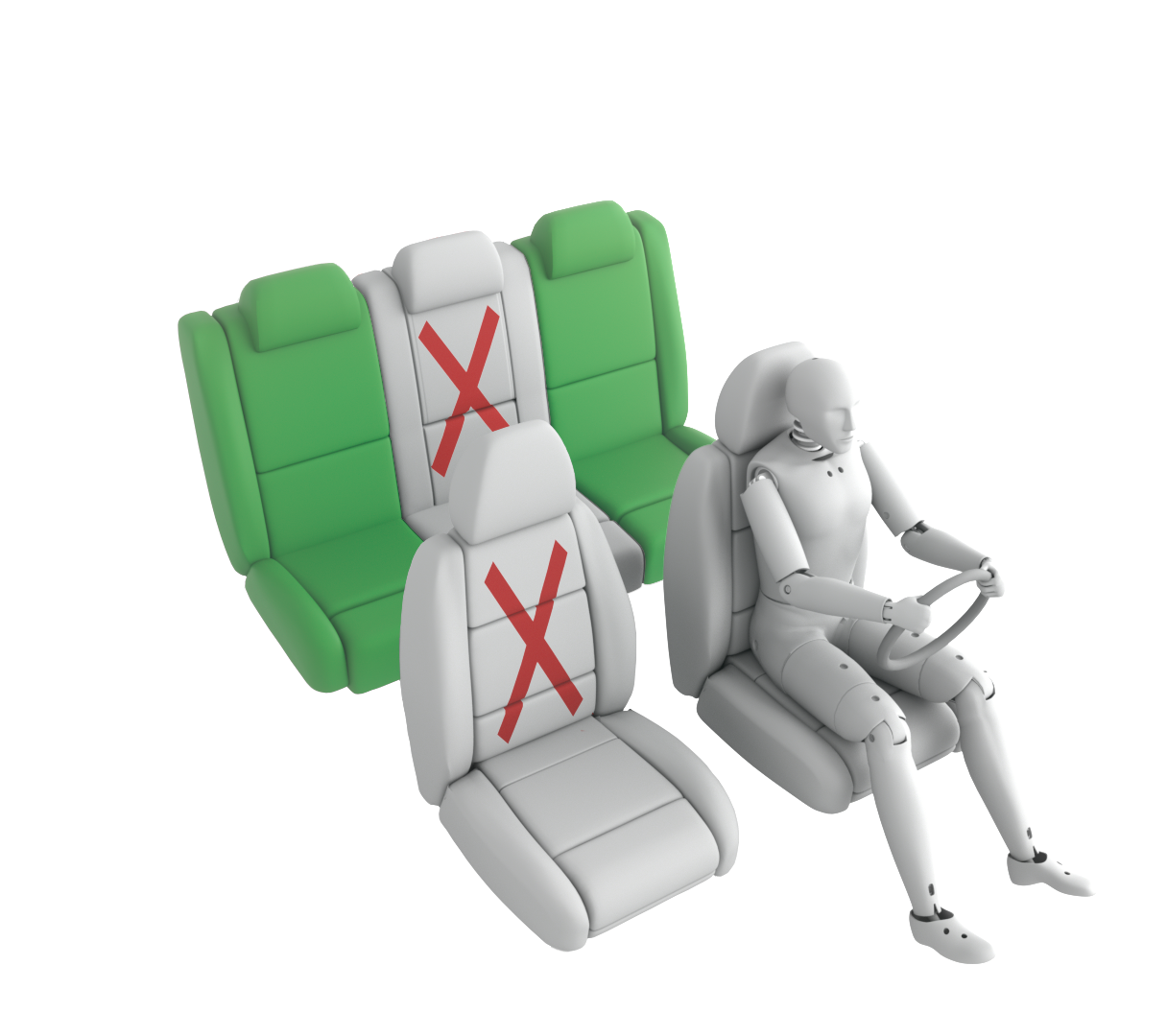
Easy
Difficult
Safety critical
Not allowed
-
Airbag ON
Rearward facing restraint installation not allowed
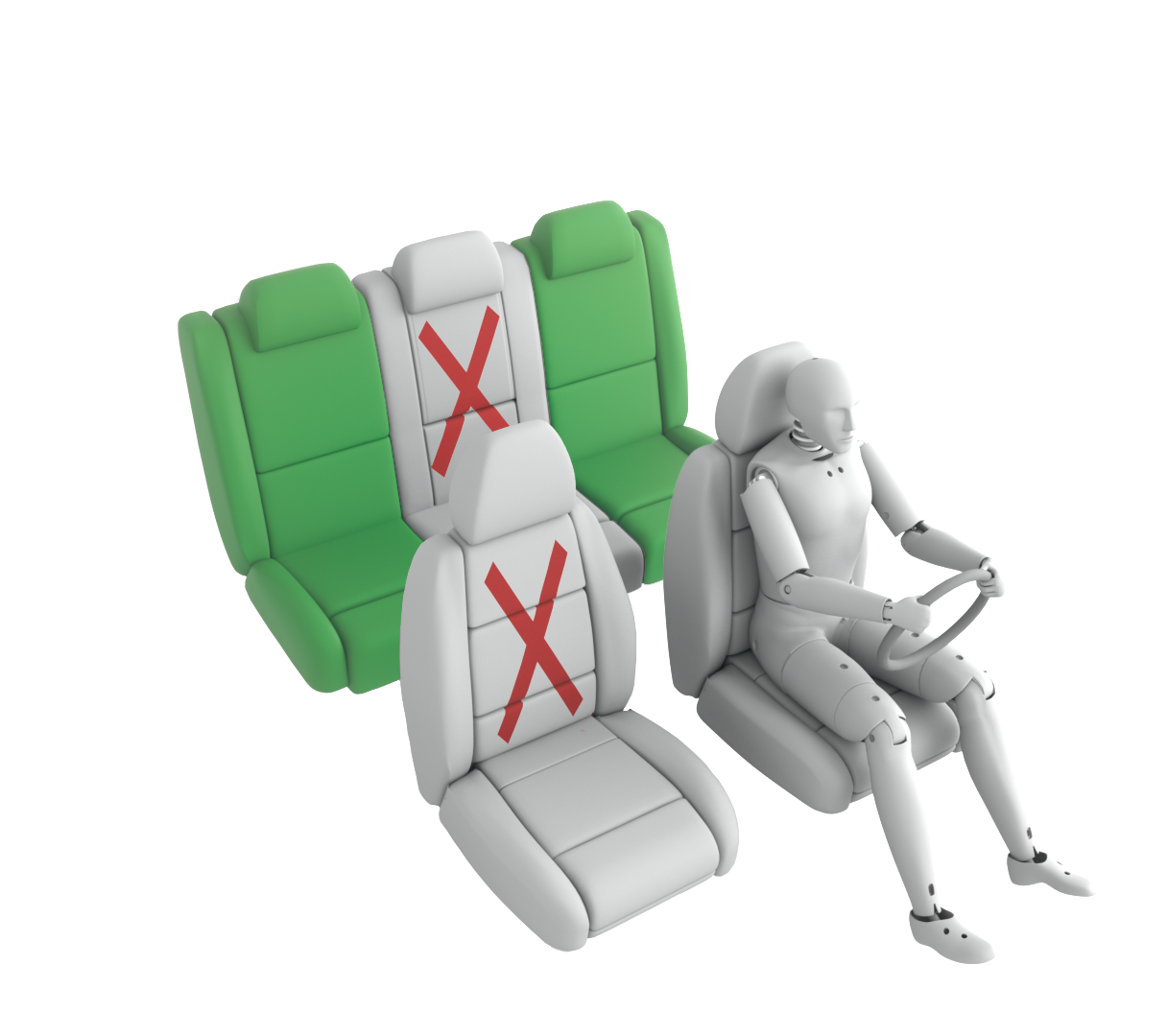
Easy
Difficult
Safety critical
Not allowed
-
Airbag ON
Rearward facing restraint installation not allowed
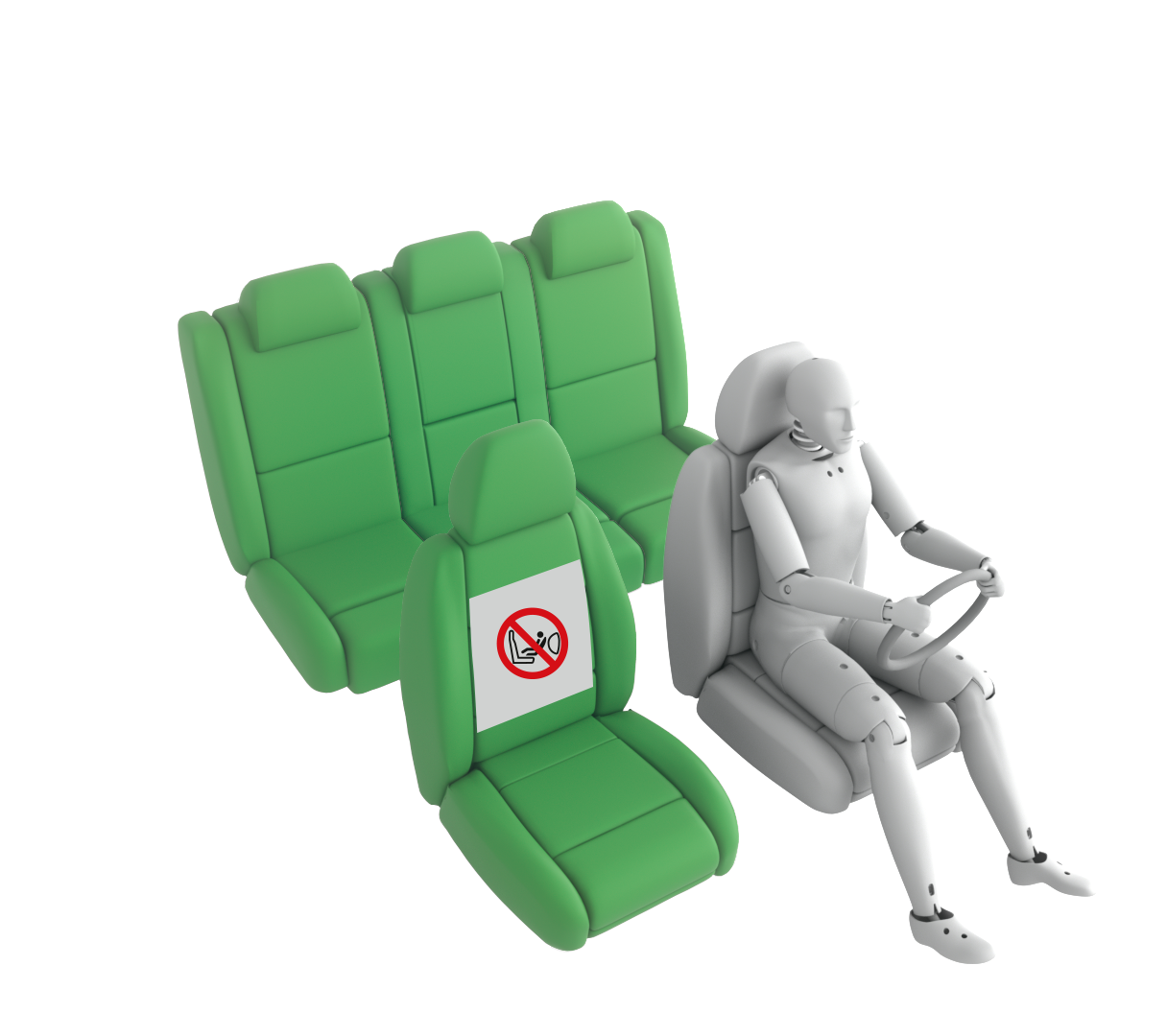
Easy
Difficult
Safety critical
Not allowed
-
Airbag ON
Rearward facing restraint installation not allowed
In both the frontal offset and side barrier tests, good protection was provided to all critical body areas for both child dummies, and the EQE SUV scored maximum points in this part of the assessment. The front passenger airbag is automatically disabled when a child restraint is placed in that seating position. Daimler demonstrated that system worked robustly, the airbag being enabled when an adult occupied the seat but being disabled with a child restraint system. The vehicle is equipped with an indirect child presence detection system, which warns when a child or infant may have been left in the car. All of the child restraint types for which the EQE SUV is designed could be properly installed and accommodated in the car.
- Good
- Adequate
- Marginal
- Weak
- Poor

Pedestrian & Cyclist Head 11.0 Pts
Pelvis 2.6 Pts
Femur 4.5 Pts
Knee & Tibia 9.0 Pts
| System Name | Active Brake Assist | ||
| Type | Auto-Brake with Forward Collision Warning | ||
| Operational From | 7 km/h | ||
| PERFORMANCE | | |||
Protection of the head of a struck pedestrian or cyclist was predominantly good or adequate, with poor results recorded at the base of the windscreen and on the stiff windscreen pillars. Protection of the pelvis was mixed while that of the femur and of the knee and tibia was good apart from a few areas where it was adequate. The autonomous emergency braking (AEB) system of the Mercedes-Benz can respond to vulnerable road users as well as to other vehicles. The system performed well in tests of its response to pedestrians, including those behind the car when it is reversing. The system scored highly in tests of its reaction to cyclists, including dooring, in which the car prevents or warns against door opening if a cyclist is approaching from behind. Similarly, the AEB system performed well in all tests of its response to motorcyclists.
- Good
- Adequate
- Marginal
- Weak
- Poor
| System Name | Speed Limit Assist |
| Speed Limit Information Function | Camera & Map |
| Speed Control Function | Intelligent ACC (accurate to 5km/h) |
| Applies To | Front and rear seats | ||
| Warning | Driver Seat | Front Passenger(s) | Rear Passenger(s) |
| Visual | |||
| Audible | |||
| Occupant Detection | |||
|
|||
| System Name | Attention Assist |
| Type | Indirect monitoring |
| Operational From | 30 km/h |
| Fatigue | Drowsiness |
| System Name | Active Lane Keeping Assist |
| Type | LKA and ELK |
| Operational From | 45 km/h |
| Performance | |
| Emergency Lane Keeping | |
| Lane Keep Assist | |
| Human Machine Interface | |
| System Name | Active Brake Assist | |||
| Operational From | 7 km/h | |||
| Sensor Used | camera and radar | |||
Overall, the autonomous emergency braking (AEB) system of the EQE SUV performed well in tests of its reaction to other vehicles, and scored full points in the head-on test scenarios. A seatbelt reminder system is fitted as standard to the front and rear seats but the driver status monitoring system did not score highly, detecting only driver drowsiness. The lane support system gently corrects the vehicle’s path if it is drifting out of lane and also intervenes in some more critical situations. The speed assistance system identifies the local speed limit, and the driver can choose to allow the limiter to be set automatically by the system.
- Specifications
- Safety Equipment
- Videos
- Rating Validity
Specifications
Tested Model EQE SUV 350 4MATIC from Mercedes-EQ
Body Type - 5 door SUV
Year Of Publication 2023
Kerb Weight 2580kg
VIN From Which Rating Applies - W1NGM**B*PA028254
Class Large SUV
Safety Equipment
Note: Other equipment may be available on the vehicle but was not considered in the test year.
Fitted to the vehicle as standard
Fitted to the vehicle as part of the safety pack
Not fitted to the test vehicle but available as option or as part of the safety pack
Not available
Not applicable
Videos
Rating Validity
Find more information in the General Comments section of the assessment
 Share
Share
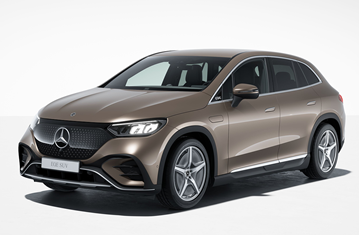

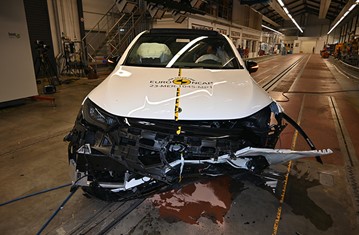
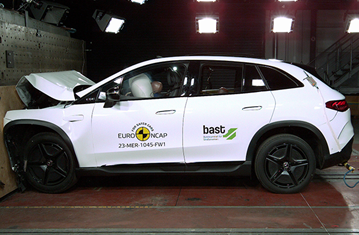

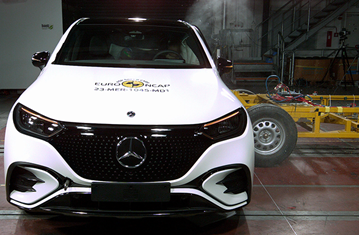
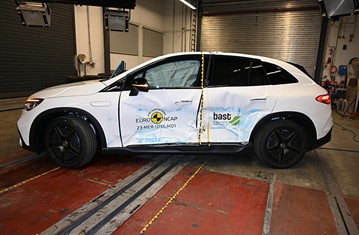

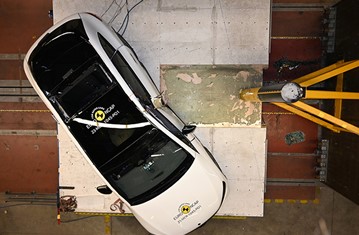
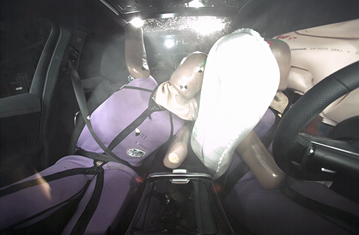
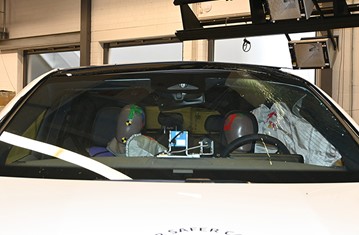








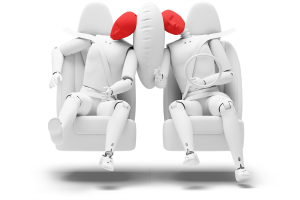


The passenger compartment of the EQE SUV remained stable in the frontal offset test. Dummy numbers showed good protection of the knees and femurs of both the driver and passenger. Daimler showed that a similar level of protection would be provided to occupants of different sizes and to those sitting in different positions. Protection was good for all of the front passenger’s critical body areas. Analysis of the deceleration of the impact trolley during the test, and analysis of the deformable barrier after the test, revealed that the EQE SUV would be a somewhat aggressive partner in a frontal collision. In the full-width rigid barrier test, protection of all critical body areas was good or adequate for both the driver and the rear passenger. In the side barrier test, protection of all critical body areas was good and the EQE SUV scored maximum points in this part of the assessment. In the more severe side pole impact, protection was good or adequate for all critical parts of the body. Control of excursion (the extent to which a body is thrown to the other side of the vehicle when it is hit from the far side) was adequate. The EQE SUV has a counter-measure to mitigate against occupant to occupant injuries in such impacts and, in Euro NCAP’s test, dummy numbers showed good protection. However, Daimler were unable to demonstrate that the centre airbag provided robust protection for all occupant sizes and the result was penalised. Tests on the front seats and head restraints demonstrated good protection against whiplash injuries in the event of a rear-end collision. A geometric analysis of the rear seats also indicated good whiplash protection. The EQE SUV has an advanced eCall system which alerts the emergency services in the event of a crash. The car also has a system which applies the brakes after an impact, to avoid secondary collisions. Daimler demonstrated that if the car entered water the doors, if locked, could be opened within two minutes of power being lost but not that electric windows would remain functional long enough to allow occupants to escape.